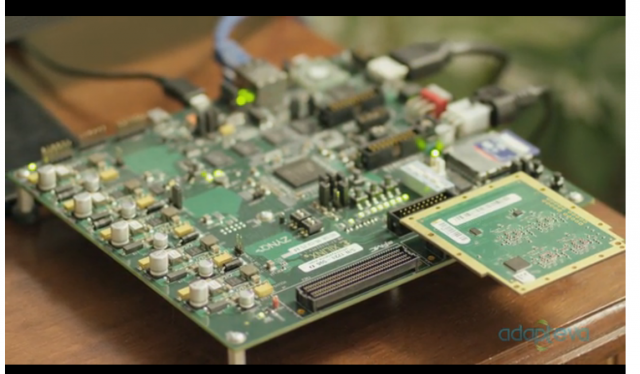Tiny nanoparticles are a huge part of our lives, for better or for worse.”Everything, when miniaturized to the sub-100-nanometer scale, has new properties, regardless of what it is,” says Chad Mirkin, professor of chemistry (and materials science, engineering, medicine, biomedical engineering and chemical and biological engineering) at Northwestern University. This is what makes nanoparticles the materials of the future. They have strange chemical and physical properties compared to their larger-particle kin. The thing that matters about nanoparticles is their scale.
Click to launch the photo gallery
Nanoscale materials are used in everything from sunscreen to chemical catalysts to antibacterial agents–from the mundane to the lifesaving. “I spilled wine at a Christmas party once, and I was terrified. Red wine on a white carpet. And it wipes right up,” Mirkin recalled. “The reason is the nano-particulate used to coat the carpet keeps that material from absorbing into the carpet and staining the carpet.”
On a more sophisticated side, researchers are developing nanoscale assays used to screen for cancer, infection and even genes. Gold nanoparticles that have been doped with DNA can be used to detect bacteria in a person’s bloodstream, determining whether a patient has infection and what kind. Or they can be used to detect changes in a person’s immune system that reflect the presence of cancer. Nano-flares can measure the genetic content of cells, and light up–or flare–when they detect a specific cell of a doctor’s choosing, maybe cancer, stem cells or even the reaction to a small molecule used in a new drug.
So why do nanoscale things act this way? The scale allows for unique interactions among atoms and their constituent parts, and there are a few ways that this happens. For non-biological nanoparticles, it helps to think of a bowling ball, and where all its atoms are located. The vast majority are inside the ball, with a finite number at the surface, interacting with the air or the wooden lanes. Atoms inside the ball interact with atoms just like themselves, but atoms at the surface interact with ones very different than themselves, Mirkin explained. Now shrink that ball to molecular scales.
“The smaller you go, the ratio of surface to bulk atoms goes up,” he said. “At a larger scale, the atoms at the surface are relatively inconsequential. But at nanoscales, you could have a particle that is almost all surface. Those atoms begin to contribute very significantly to the overall properties of the material.”
These interactions play out in electronics, too, making material like graphene and quantum dots useful for tiny computers and communication devices. Nanoscale materials offer a smaller area for electrons to move around. And maybe most importantly for current research, on the nanoscale, you’re on the scale of biology.
Given all these uses and future promises, Mirkin said, most people generally embrace nanotechnology in everyday life, even though most don’t know what that actually means. Even controversial uses like sunscreen are pretty widely used, and often without knowledge of it.
“Much of it is going to be embedded in conventional products that we buy and don’t even think about,” Mirkin said. “There’s nothing inherently good or bad in terms of making things small. The issue ultimately is, what do they do, and what are they used for? Given the application, have we considered the proper safety analyses and implications? And so far, I think we’ve done a pretty good job.”
/cdn.vox-cdn.com/uploads/chorus_asset/file/6678919/10478570_10152214521608870_2744465531652776073_n.0.png)






